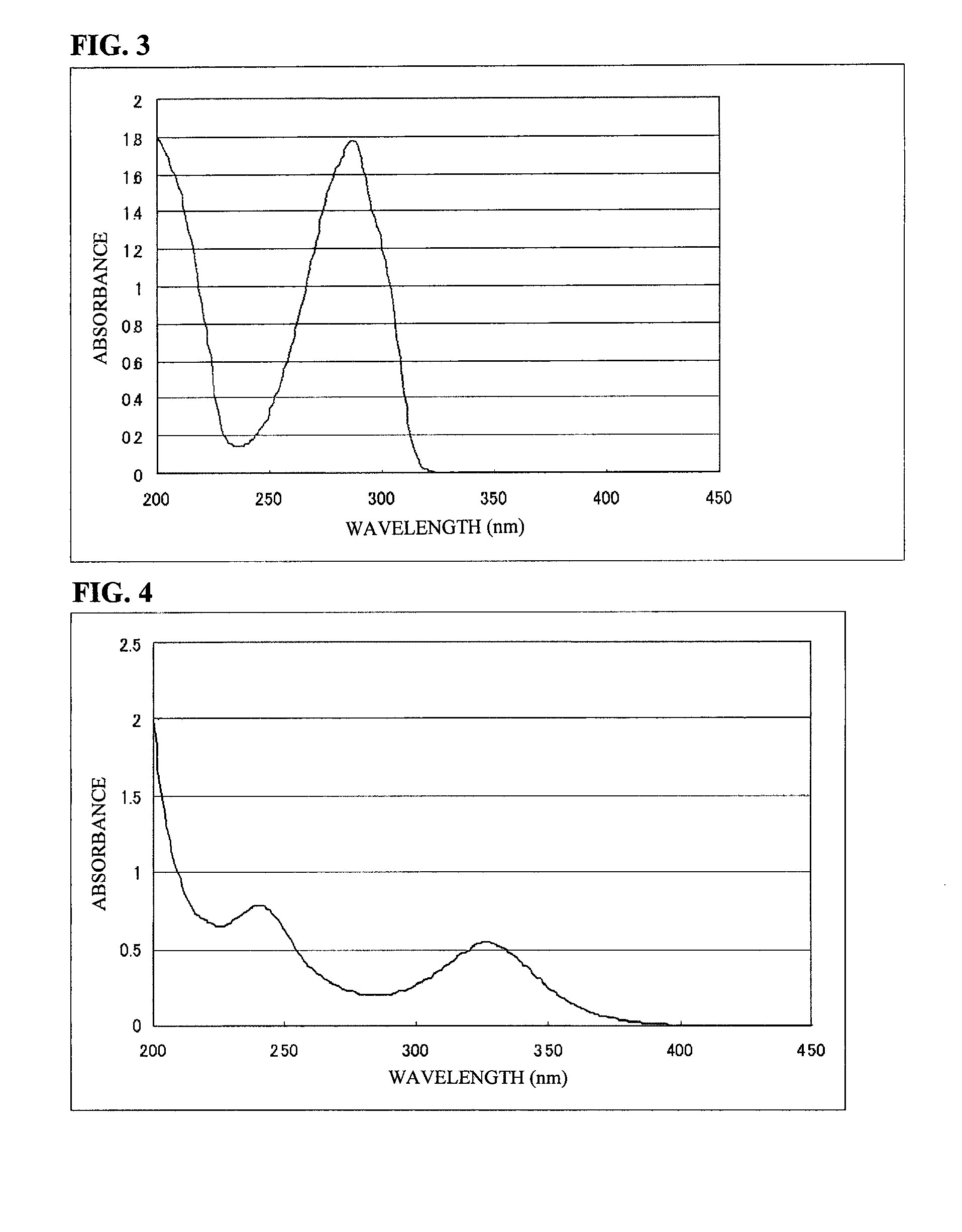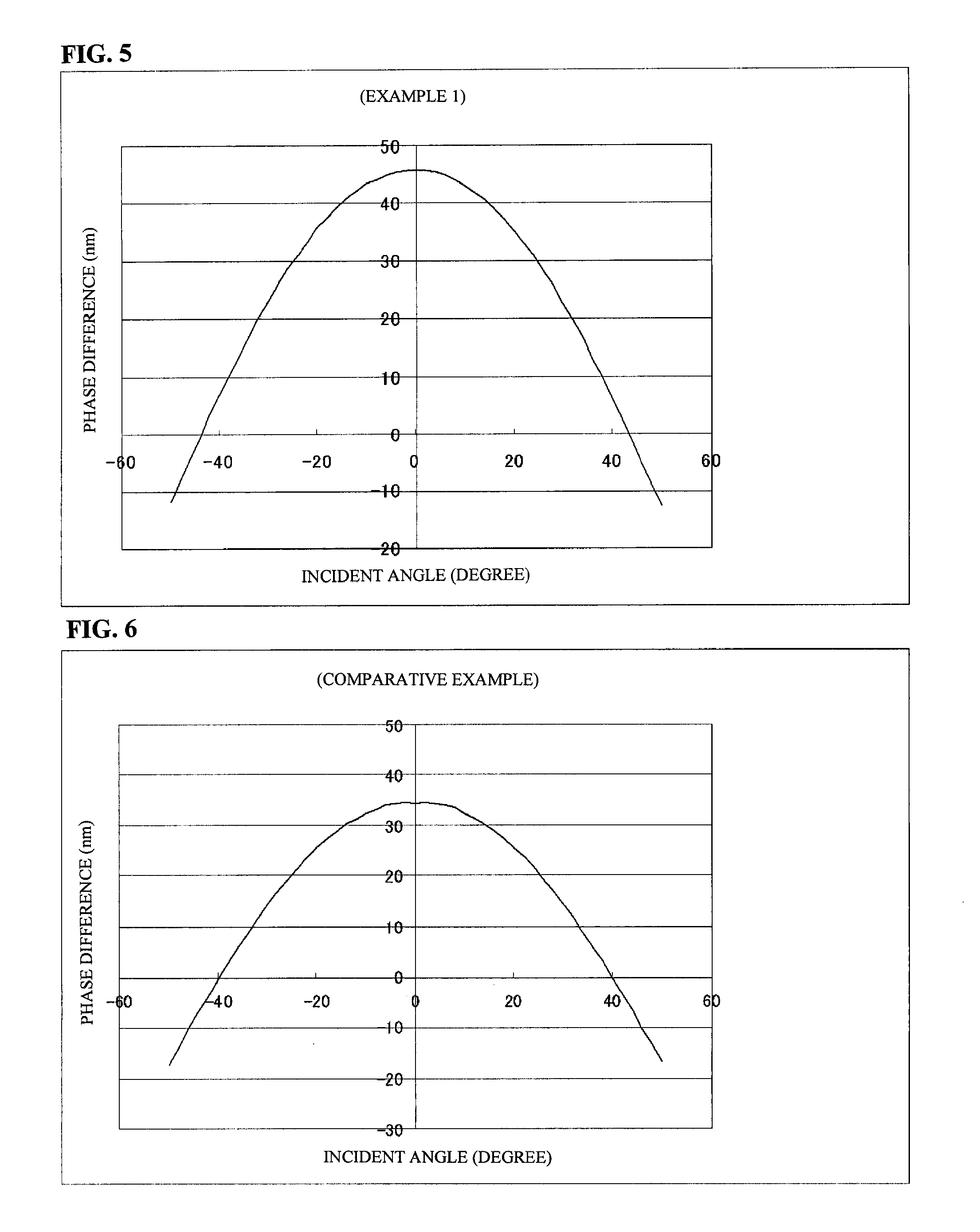Polymerizable liquid crystal composition
a liquid crystal composition and polymerizable technology, applied in the field of polymerizable liquid crystal composition, can solve the problems of difficult formulation of dichromatic initiators, limited materials can be used, and extremely difficult to impart, and achieve the effects of simple production process, reduced production cost, and reduced production cos
- Summary
- Abstract
- Description
- Claims
- Application Information
AI Technical Summary
Benefits of technology
Problems solved by technology
Method used
Image
Examples
reference example 1
Preparation of Polymerizable Liquid Crystal Composition
[0079]A polymerizable liquid crystal composition (A) was prepared that contains 35.18% of a liquid crystal acrylate compound represented by the formula (VI-9-a),
15.08% of a liquid crystal acrylate compound represented by the formula (VI-9-b),
12.56% of a liquid crystal acrylate compound represented by the formula (VI-8-a),
20.94% of a liquid crystal acrylate compound represented by the formula (V-5-a),
8.79% of a chiral acrylate compound represented by the formula (a-1) (FIG. 3 shows a spectrum obtained when this compound is dissolved in acetonitrile in a concentration of 20 ppm and measurement is performed at an optical path length of 1 cm. It is understood that the compound represented by the formula (a-1) has a peak wavelength of 285 nm and an absorbance of 1.77.),
2.93% of a chiral acrylate compound represented by the formula (e-1),
0.25% of liquid paraffin, 0.08% of p-methoxyphenol, and 4.19% of a photoinitiator Irgacure OXE-01 ...
example 1
[0080]A polymerizable liquid crystal composition (B) of the present invention containing 99.26% of the polymerizable liquid crystal composition (A) prepared in Reference Example 1 and 0.74% of a light-absorbing agent represented by formula (X-1) was prepared.
The light-absorbing agent represented by the formula (X-1) had an absorption band near 360 nm.
[0081]A polymerizable liquid crystal solution (B) was prepared so as to contain 40% of the polymerizable liquid crystal composition (B) and 60% of cyclohexanone. The polymerizable liquid crystal solution (B) was applied onto a glass substrate including a polyimide orientation film and subjected to a rubbing treatment, by spin coating (1000 revolutions per minute for 30 seconds). The substrate subjected to spin coating was dried at 60° C. for 2 minutes and then left to stand at room temperature for 3 minutes to cause the planar orientation of polymerizable liquid crystal. The resultant polymerizable liquid crystal composition layer was i...
example 2
[0082]A biaxial film was produced in the same manner as in Example 1, except that the concentration of the polymerizable liquid crystal composition (A) was changed to 99.26% and the concentration of the light-absorbing agent (X-1) was changed to 0.74%. The front phase difference Re was 45 nm and the phase difference Rth in the thickness direction was 207 nm.
PUM
| Property | Measurement | Unit |
|---|---|---|
| wavelength range | aaaaa | aaaaa |
| wavelength range | aaaaa | aaaaa |
| peak wavelength | aaaaa | aaaaa |
Abstract
Description
Claims
Application Information
 Login to View More
Login to View More - R&D
- Intellectual Property
- Life Sciences
- Materials
- Tech Scout
- Unparalleled Data Quality
- Higher Quality Content
- 60% Fewer Hallucinations
Browse by: Latest US Patents, China's latest patents, Technical Efficacy Thesaurus, Application Domain, Technology Topic, Popular Technical Reports.
© 2025 PatSnap. All rights reserved.Legal|Privacy policy|Modern Slavery Act Transparency Statement|Sitemap|About US| Contact US: help@patsnap.com



